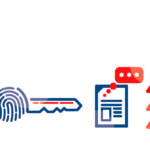As part of our work to identify changes needed in scientific publishing, the Open Pharma team met with Liz Knowles, Associate Editorial Director at Taylor & Francis Publishing Group. We aimed to gain insight into the publishing industry’s perspective on new innovations in the field, as their collaboration will be key to implementing changes.
The following article reflects the views of Liz and not necessarily those of Taylor & Francis.
Workstream 1: open access
OP: What are your views on open access policies?
LK: I think that journals need to be clearer about our policies in this area, particularly when differentiating between commercial and non-commercial article use. While Taylor & Francis’ open access portfolio is growing, the majority of our journals are still on a subscription model, although most titles do allow our Open Select option.
Workstream 2: ORCID, CRediT and Convey
OP: Has Taylor and Francis had any interaction with ORCID or Convey?
LK: While we haven’t used Convey, we do use ORCID. It’s not mandatory for authors to have ORCIDs for all of our journals, but we are moving towards this. I think that ORCID is important, as it adds another level of transparency relating to who the authors are and the extent of their involvement with the research.
OP: What are your thoughts on CRediT and Convey?
LK: We are interested in learning more about CRediT and Convey and how we could work with them. Convey is a good idea but I’m not sure whether publishers would pay to use it.
OP: Journals all use different submission systems: is there any movement towards having one submission site for all journals?
LK: Taylor & Francis is building a new research portal which is easy to use for researchers submitting their articles to Taylor & Francis journals. This portal sits over the various proprietary submission systems that our journals use, to give a superior experience to our authors.
OP: What are your thoughts on pharmaceutical companies using medical writers?
LK: We’re happy with this, as long as authors disclose it.
OP: Have you ever been approached for input into a pharmaceutical company’s publication policy, and would you be amenable to this?
LK: No, we haven’t, but I would personally be amenable to this.
Workstream 3: preprints and post-publication peer review
OP: What is your opinion on preprints?
LK: Preprint servers are a fact of life these days, and we need to work in tandem with them. We are happy for our authors to share their original manuscript or preprint as widely as they wish (see our guidance here)
OP: Are Taylor and Francis aware of post-publication peer review platforms, such as F1000 Research?
LK: We are aware of these, especially those recently launched by Wellcome and Gates and are interested to see how they develop alongside the more traditional peer reviewed journals.
Workstream 4: layered publication model
OP: What is your perspective on publishing patient lay summaries?
LK: We’re very happy to host these, as long as they’ve been through the same peer review process as articles. We would encourage authors to produce them, but we rarely receive them!






